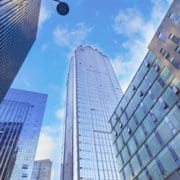The Dangers of the Technology Status Quo
Many commercial real estate firms have found themselves at the point where they are stuck with outdated processes, ancient technology, and so many spreadsheets. This situation is often justified with phrases such as “This is the way things have always been done” or “We don’t see a need to change”. Welcome to the “status quo”, i.e., the state in which it’s easier to do nothing than to do something.
What is the Status Quo?
“Status quo bias” is a cognitive bias that affects human decision-making where one has a preference for the current state of affairs. The current state is used as a reference point, and any deviation from that baseline is perceived as a loss. The potential losses from switching from the familiar to the unknown are weighed more heavily than any potential gains. In fact, a study from researchers Kahneman and Tversky proposes that losses are twice as psychologically harmful as gains are beneficial, even when the potential gains do indeed outweigh the possible losses.
As an example, consider a situation where you and your friends are going out for lunch. More than likely, you have a regular favorite restaurant. And while you may browse the menu, you probably order your usual. Rather than trying something new, with the gamble that you may not like it, you prefer to stick with what you know. You won’t risk being unhappy with what you ordered and you know you will like your usual, but you are missing out on potentially finding a new favorite item. This is a result of status quo bias.
Why the Status Quo?
Change can be a scary thing, which is why so many of us prefer the familiar. It makes us feel safe and comfortable and can sometimes just make decision-making easier. Here are a few more reasons why humans in general like to maintain the status quo:
- Loss aversion: The status quo is a comfortable safe zone (why fix what isn’t broken?), and instituting change often invites risk. Buyers who are even considering upgrading or adapting to new technology are increasingly seeking ways to identify and reduce risk factors, including damage to professional credibility, reduction in job security, inability of the software to technically perform as promised, and loss of monetary investments.
- Endowment effect: This theory says that people attribute more value to certain things just because they own them (i.e., they established the processes, chose the current tooling, etc). Because of this “ownership”, there is a reluctance to change, and the “owner” may be adamant about doing things the way they have always been done.
- Regret avoidance: Some people fear making the wrong decision or they don’t make a move because something better could come along. Even when a firm recognizes that they need new technology, buyers have more choices and possibilities than ever before. But the downside to having so many options is that buyers may worry about whether they are making the right choice or potentially missing out on something better. As humans, we are innately motivated by what we don’t have and the anxiety of opportunity cost. Ironically, the technology that was intended to make our lives easier has instead led us to constantly second-guess ourselves.
Further, some people may be hesitant to be early adopters of new strategies, solutions, innovations, or technologies; some people do not want to put in the effort and perceived disruption often associated with technology updates and upgrades; and some people do not want to expend budget on IT infrastructure or may not always see the value.
The Problem with the Status Quo
Bob Iger of The Walt Disney Company said, “The riskiest thing we can do is just maintain the status quo”, and there is truth in these words. OneMotion sums it up best when they say, “The cost of the status quo is the business and opportunity costs associated with the organizations not deploying necessary technology and other business-innovation improvements to match the complexity of their business”. These costs, often referred to as the “cost-to-delay”, can be a result of decreased productivity, lost opportunity, or even errors caused by outdated processes. For example, 90% of spreadsheets today are guaranteed to contain at least one error, if not more. Common spreadsheet errors include mistyped numbers, wrong formulas or logic, rounding mistakes, incorrect cell formatting, and copy-and-paste inaccuracies. Other than the wasted hours and increasing frustration, these mistakes can have costly repercussions.
The status quo can also negatively impact efficiency, effectiveness, and productivity (which in turn can reduce employee satisfaction); can take time away from value-add activities; and can impair a firm’s ability to grow or scale.
What to Do About the Status Quo
There is a gap forming between those CRE firms that embrace technology and those satisfied with the status quo. Failure to invest in the right software solutions and analytics can put a damper on firm productivity, effective asset and investor management, informed decision-making, and eventually firm growth.
First, regularly evaluate your business processes and look for inefficiencies. Are you wasting time on manual processes, such as sending paperwork via snail mail, individually updating contact and bank information, and responding to one-off emails? Are you missing key data points about the firm or clients that could be uncovered with technology and drive more informed decision-making? Are there other areas where technology could help drive improvement or growth? Do you feel like you may be falling behind the competition or can’t keep up with your clients’ demands? If your answer to any of these questions is “yes” then it’s a good sign that you may need to break out of the status quo.
Secondly, embrace disruption. Disruption might not sound like a positive, but it is necessary to shake up the status quo. And that is a good thing. In a recent report on digital disruption, Accenture found that companies that harness the power of new technology increase their competitiveness, but also boost earnings by an average of 13% per year. Technological disruption replaces inefficiencies and strengthens business processes.
To learn more, download this free checklist for 7 Signs Your CRE Firm Needs Investor Management Software. Discover how your CRE firm can use technology to more effectively raise capital and manage investors, scale the firm, and drive company productivity.











